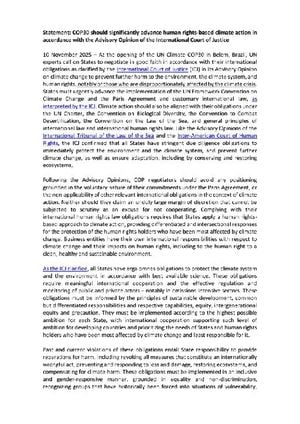On September 30, 2025, the usually quiet halls of Marine Corps Base Quantico in Virginia buzzed with an unusual sense of urgency. Hundreds of the nation’s top military minds—generals and admirals from across the armed services—had been summoned by U.S. Secretary of War Pete Hegseth for a rare and forceful address. The message that day, and in the days that followed, would ripple through every rank and corner of the military establishment, reshaping the Pentagon’s culture, priorities, and even its physical standards.
According to CNN, the speech was not just any routine pep talk. Hegseth, known for his outspoken views and his alignment with the Trump administration’s priorities, delivered what many described as a “largely political” address that left little room for debate. He made his expectations unmistakably clear: “If you disagree, resign.” Those words, sharp and unyielding, echoed through the auditorium and, soon after, through military installations nationwide.
Within a week, an internal Department of Defense memorandum dated October 6, 2025, landed on the desks of service leaders. The order: ensure that every single service member—regardless of rank or role—watched the full recording or read the official transcript of Hegseth’s speech, and reviewed the sweeping policy changes he announced. The deadline? October 31, 2025. The directive, reviewed by CNN and corroborated by Business Insider, also called on leaders to “inculcate our cultural shift and ensure every member of the Department of War understands my guidance.”
The speech and subsequent memo marked a dramatic tightening of the Army’s—and by extension, the entire military’s—approach to public image, discipline, and internal culture. Hegseth’s vision, as outlined at Quantico, was unapologetically blunt. He railed against what he called “foolish and reckless political leaders” who had set the military on the wrong path, declaring, “We became the woke department. But not anymore.”
Central to Hegseth’s message was a return to what he termed the “warrior ethos.” This meant, above all, a renewed focus on physical fitness, grooming standards, and a no-nonsense approach to appearance. “It’s tiring to look out at combat formations, or really any formation, and see fat troops,” Hegseth declared, according to Business Insider. “Likewise, it’s completely unacceptable to see fat generals in the Pentagon and leading commands around the country and the world.”
The new policies, detailed in a series of 11 memorandums issued on September 30, called for mandatory daily physical training and twice-yearly fitness tests. Beards, once permitted under certain medical waivers, would now only be allowed for those in special operations forces. “The era of rampant and ridiculous shaving profiles is done,” Hegseth said. “If troops want beards, they’d need to join special operations forces.”
But the changes didn’t stop at appearance. Hegseth’s directives also targeted what he described as distractions from the military’s core mission of lethality and warfighting. This included consolidating or eliminating mandatory trainings not directly related to combat readiness, and ending diversity, equity, and inclusion (DEI) initiatives that weren’t tied to warfighting effectiveness. Reforms to military equal opportunity policies and reviews of rules on hazing, bullying, and harassment were also on the table.
The reaction within the ranks was swift. The Texas Military Department, for instance, removed seven National Guard troops deployed to Chicago after determining they “did not meet mission requirements,” a spokesperson told CNN. These troops, part of President Donald Trump’s domestic crime-fighting mission, were replaced after images circulated on social media showing some members who appeared overweight. “The Texas National Guard echoes Secretary Hegseth’s message to the force: ‘Our standards will be high, uncompromising, and clear,’” the spokesperson emphasized.
Hegseth’s speech and the subsequent policy shift partially rolled back a decade-long effort to eradicate toxic culture in the Army—efforts that had aimed to reduce harmful behaviors like harassment and to promote inclusion. According to The New York Times and CNN, the new directives instead prioritize recruitment, retention, and a return to what Hegseth calls “common sense application of standards.” The goal, as he put it, is to ensure the military’s image and effectiveness are never again compromised by what he sees as misplaced priorities.
“Leaders at echelon must inculcate our cultural shift and ensure every member of the Department of War understands my guidance,” Hegseth wrote in his October 6 memo. The message was reinforced by a Pentagon spokesperson, who told CNN, “The Secretary’s speech was for the whole force and this memo just reinforces that guidance.”
Not everyone, of course, is on board with the new direction. Some critics argue that rolling back efforts to address toxic culture and DEI initiatives risks undermining morale and alienating talented individuals from diverse backgrounds. Others, however, have welcomed the changes, arguing that a focus on physical fitness and combat readiness is essential for the military’s core mission.
Hegseth himself seemed to anticipate the controversy, offering a stark choice to those who might disagree: “If the words I’m speaking today are making your heart sink, then you should do the honorable thing and resign.” It’s a line that, according to Business Insider, resonated throughout the department, setting a tone of uncompromising leadership that is likely to define the months ahead.
As the October 31 deadline for reviewing the speech and policy changes approached, military leaders across the country scrambled to ensure compliance. The Department of Defense provided links to the transcript and video recording, making it clear that there would be no exceptions. The expectation was set: every service member must internalize the new standards and be ready to embody them in the field, in the Pentagon, and in the public eye.
For many in uniform, the changes represent a return to a more traditional vision of military discipline and hierarchy. For others, they signal a contentious shift away from reforms that had sought to broaden the military’s appeal and address longstanding issues of discrimination and abuse. The debate, like the directives themselves, is far from settled.
Still, one thing is clear: under Secretary Hegseth and the Trump administration, the U.S. military is undergoing one of its most significant cultural and operational resets in recent memory. Whether this new era will deliver the results its architects promise—or provoke new challenges—remains to be seen.




